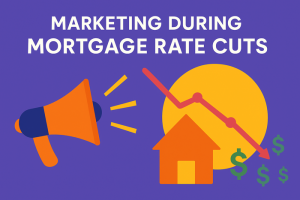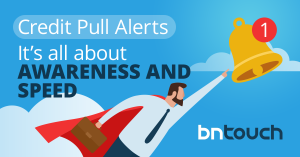Summary
This article emphasizes Facebook’s new policy for mortgage ads and the importance of creating compliant and transparent mortgage advertisements. It explains the need for accurate messaging, adherence to industry regulations, and maintaining consumer trust. By following these guidelines, professionals can create effective marketing campaigns that align with legal standards and ethical practices.
Your Facebook ads are running, optimized to the perfect audience for the particular loan program you are advertising, and generating leads in your pipeline. These optimized campaigns are now at the point where they are generating a regular flow of leads, day in and day out that you can depend on, and you are diligently using your CRM to nurture and delight these leads, establishing yourself as a thought leader in the mortgage industry.
There is a change that has recently been adopted with regards to Facebook advertisers that advertise in a few key areas that will require you to rethink your strategy on your next ad campaign. On August 26th, Facebook rolled out a requirement for advertisers in three key groups to specify that their ads fall into what they are calling a special ad category. One of these three key groups relates to the Mortgage Industry.
Anyone that runs ads for property listings, home insurance, mortgages or other related opportunities falls into the Facebook Special Ads Category for housing and needs to abide by these key new ad requirements.
Ad Category & Changes To Your Existing Structure
As a mortgage professional, any ads you create are now going face some limitations when it comes to audience targeting. Facebook’s theory is that this will help enforce their non-discrimination policies that can be violated when advertisers filter audiences based on a specified list of personal characteristics, as defined by Facebook’s Discriminatory Practices Policy.
The following options are different or unavailable for ads that fall into the Special Ad Categories
- Saved audiences: You cannot use previously created saved audiences, as this option is greyed out.
- Locations: You can target your ads to people by geographic location (such as country, region, state, province, city or county), but not by postcode. Additionally, location selections will automatically include a 15-mile radius around that targeted city, address or pin-drop.
- Age: Your target audiences must include ages 18 through 65+ (the whole age range. This filter is not editable).
- Gender: Your target audiences must include all genders.
- Detailed targeting: Some demographic, behavior and interest options are unavailable (e.g. income or educational level). Excluding any detailed targeting, or selections is also unavailable.
The “Special Ad Category” step has been added to the campaign creation flow in the Audience section of the campaign. As a mortgage professional, this would require that you check the box that says you are running an ad campaign that falls in the special ad category.
Do I Need To Disclose That I Am Part Of The Special Ad Category?
While it’s true that Facebook can’t force you to check the special ad category checkbox when you run your campaigns, not clicking it, even though your mortgage ad firmly calls in the special ad category can lead to catastrophic consequences. The likely scenario is they will ultimately catch you when they are reviewing your ad and the outcome will end up being a result you do not want to occur.
As Facebook continues to grow and its platform continues to be improved, their systems are becoming better and better in spotting these anomalies in real-time every day. When they discover that you haven’t disclosed you are running an ad in a special ad category, the best-case scenario is they disable the ad and won’t let you turn it back on until you make the necessary corrections to comply with their new policy.
The worst-case scenario is they could opt to suspend your ad account indefinitely. When this happens, it is very difficult, and sometimes even impossible to get your account reinstated. So unless you want to risk being kicked off the platform altogether, you really need to abide by these new policies that Facebook has instituted and make sure your ads are always launched specifying that they fall inside the Facebook Special Ad Category.
So With These New Policies, Will My Ads Be Ineffective?
While I’m sure it’s easy to simply get upset at Facebook and decide their new rules are terrible and their platform isn’t right for your mortgage company anymore, this is actually not the case. The new policies, while super restrictive just mean that you need to step up their game and do better.
For instance, if you previously relied on running Facebook Ads for specific loan programs and filling your funnel from leads with Facebook Lead Forms, you simply need to change your content strategy. By shifting to an educational campaign about the benefits of certain types of loan programs over others and updates on timely things such new programs that may or may not be launching you can keep from having to claim a special ad category and can continue to market with your specific geographic needs, cross-referenced with something like income or educational level for instance.
But what if you don’t want to go to the effort to make these changes? If that is the case, you just need to be very particular about how you craft your ad copy. Since under the special ad category you don’t have the ability to use income, educational level or pinpointed geography to help target your ideal customers, you need to instead craft your ad copy to speak directly to the persona of your ideal customer. For instance, don’t just give the general, “Cash-out refinance loans available as low as x.x% with minimum credit score” type content. Tell a story that speaks to your ideal client’s life circumstances, goals or struggles. This will ensure the people you are forced to target that don’t fit your ideal client bucket (e.g. an 18-year-old) will just blow past the ad, ensuring that any lead you get off the ad is optimized to get you only the most qualified traffic. Done correctly, Facebook’s learning process will eventually take over and actually help you further target qualified traffic.
You see, during the learning process, Facebook analyzes who is engaging with your ads. Once that process is completed, their algorithm specifically only shows your ad to people that are most like the people that engaged with your ad during the learning process. So in other words, if you craft your ad copy to repel 18-year-olds, but draw in your ideal client, after the learning phase, your ads will most likely only be shown to those users that represent your ideal clients.
Secondly, it’s important that you no longer rely so heavily on Facebook lead forms. If you hook your ads to a landing page that is hosted on your website, you can later create retargeting audiences based on people that visited your landing page and do further marketing to them. The marketing you are going to be doing to this group of people won’t be loan program-related ads, but instead educational, “newsworthy” content. By shifting the content to that category, you are no longer running “special ad category” ads, so you can specifically target these people (and also lookalike audiences of people that are similar to the people that visited your landing page), educating and delighting them, moving them down your funnel, while at the same time getting them to think of you as the thought leader in your marketplace.
Bottom Line: Facebook Didn’t Break Their Platform. They Are Just Requiring You To Work Harder
The engine is not broken. It just now requires a different type of fuel to run it. If you have been relying on the easy low hanging fruit, it is reasonable that you feel like you could be in for a rude awakening if you don’t change your ad strategies. If you are willing to do more though and provide value and content to your prospects, with a few extra steps you can still operate effectively on Facebook’s platform, ensuring that you are getting the right leads (translation: Not anybody with a pulse, but your ideal leads), that will help you grow your pipelines and do more business.
Key Takeaways
- Understand regulatory compliance for mortgage ads.
Ensuring that your ads meet legal standards is critical to avoid penalties and maintain consumer trust.
- Create clear, transparent advertisements.
Clear communication in mortgage ads builds trust and ensures that clients understand terms and conditions.
- Monitor ad performance to stay compliant.
Ongoing performance analysis helps refine strategies while ensuring adherence to mortgage advertising regulations.
Commonly Asked Questions
- What are the key components of a successful mortgage ad policy?
A successful mortgage ad policy includes clear guidelines on compliance with legal and ethical standards, such as Truth in Lending (TILA) and Equal Credit Opportunity Act (ECOA) regulations. It ensures ads are accurate, non-deceptive, and transparent to avoid legal issues.
- Why is it important to have a defined mortgage ad policy?
A defined ad policy helps mortgage companies avoid potential legal challenges and ensures that marketing efforts are consistent, clear, and professional. It sets expectations for how marketing campaigns should be executed and protects the company’s reputation.
- How do mortgage ad policies help maintain transparency?
Mortgage ad policies ensure all information presented in ads is truthful and complete, helping customers make informed decisions. By maintaining transparency, lenders build trust with potential clients and comply with regulatory requirements.
- What challenges might lenders face with mortgage advertising compliance?
Lenders may face challenges in keeping up with changing advertising regulations or ensuring that their marketing materials meet all legal requirements. Failure to comply can result in legal penalties, reputational damage, and lost business opportunities.





